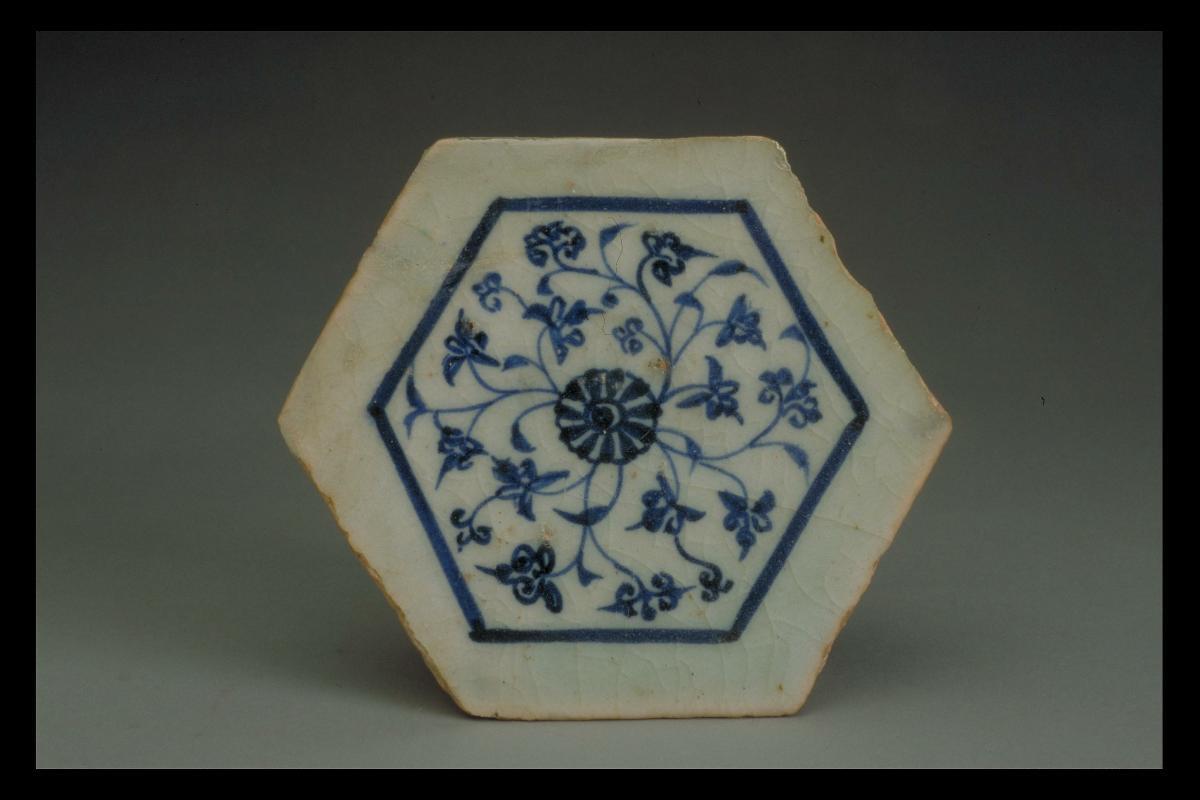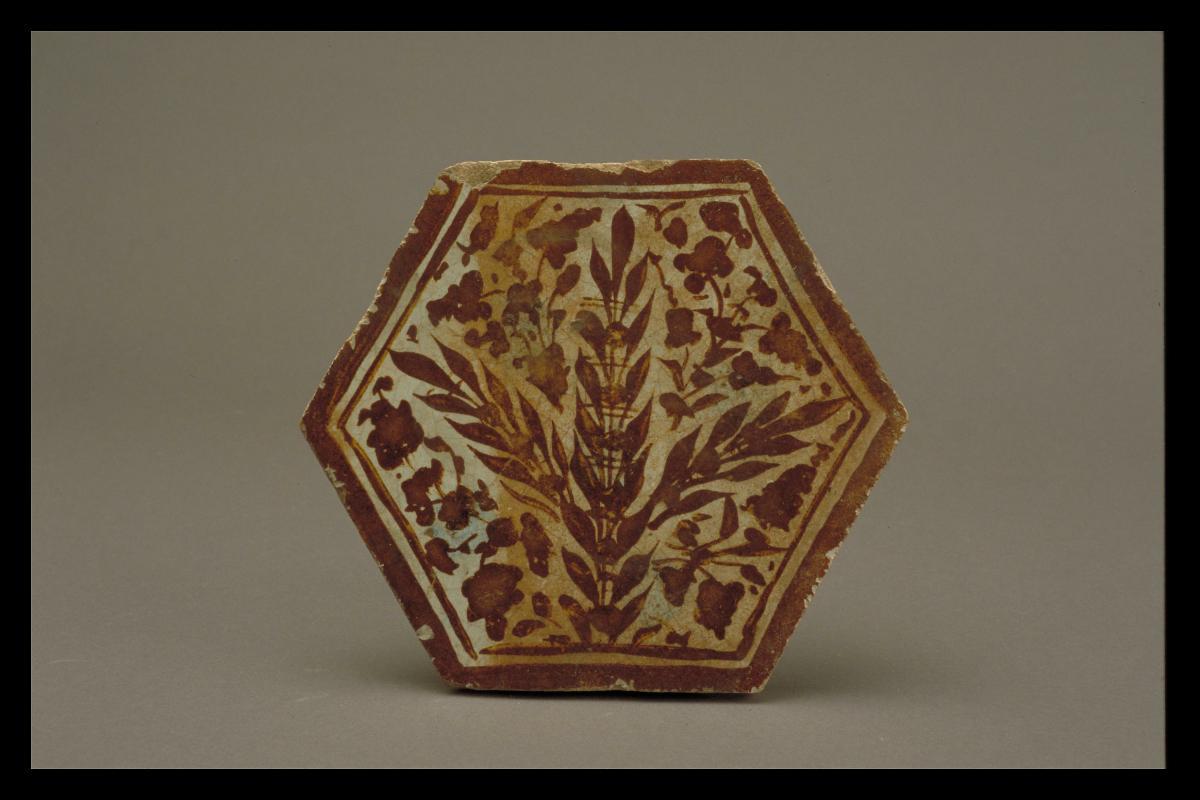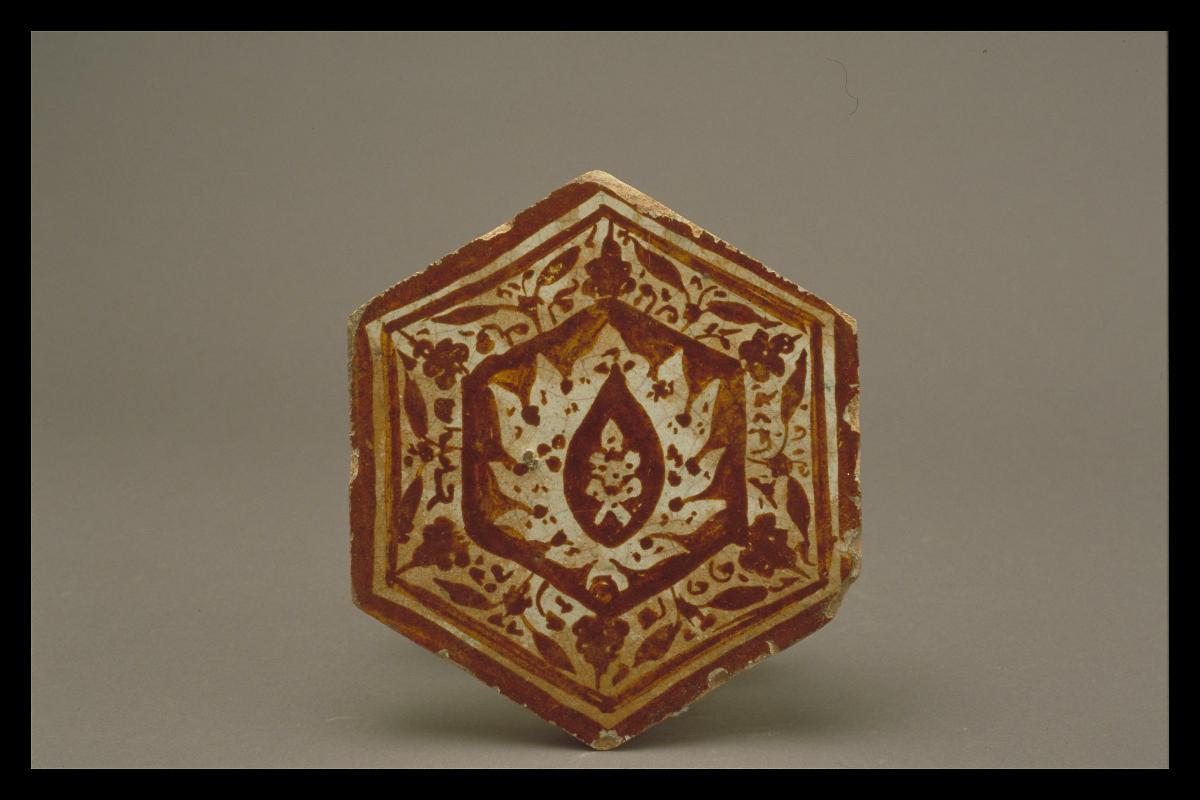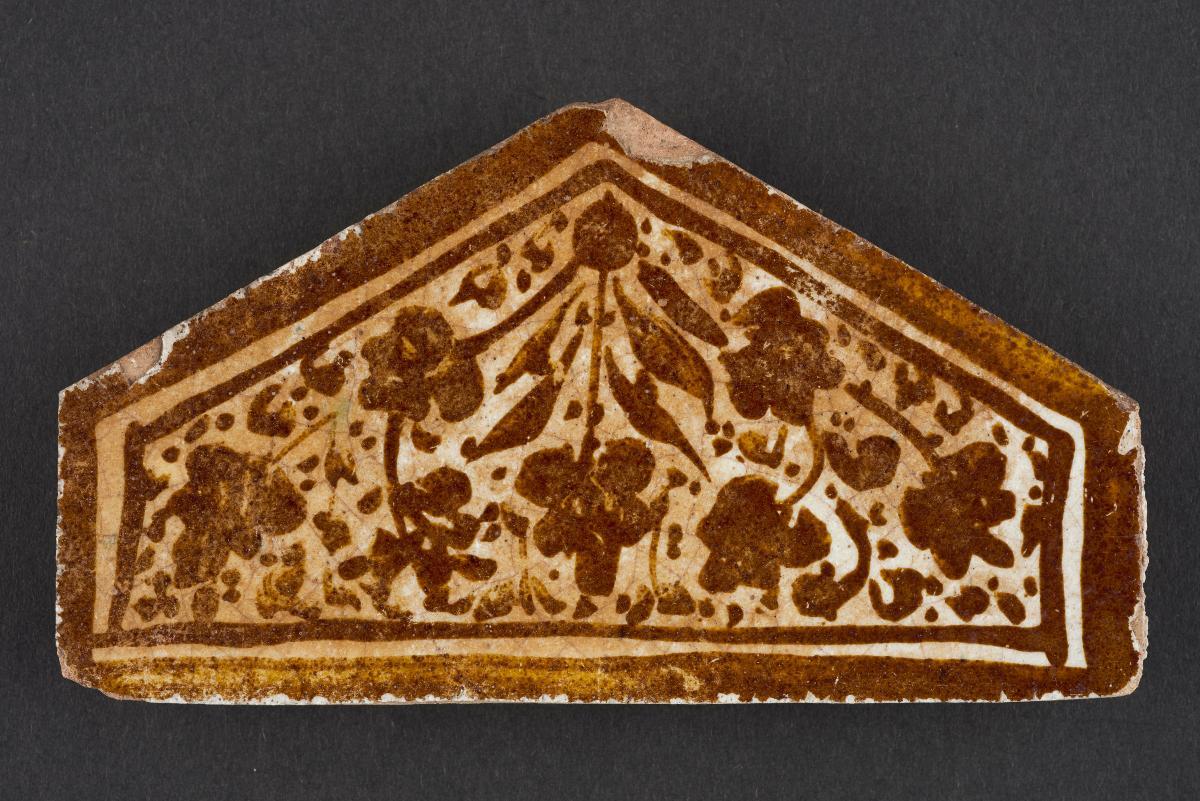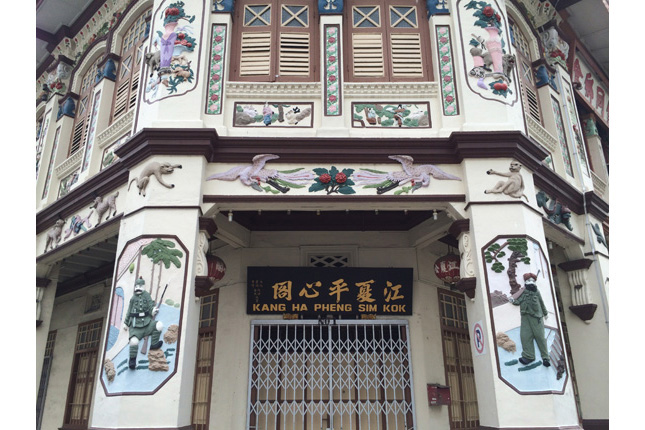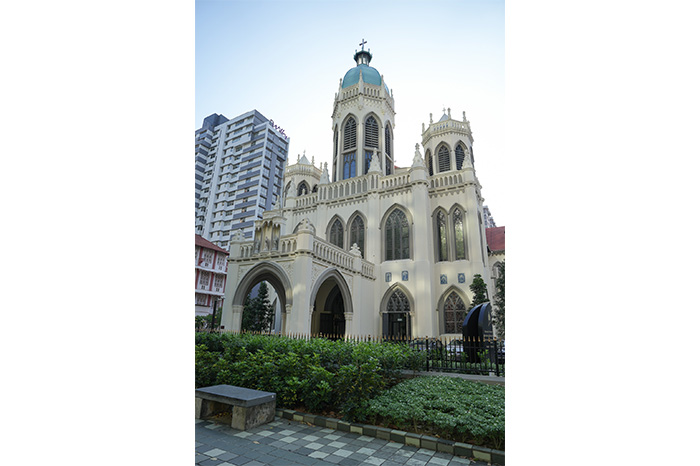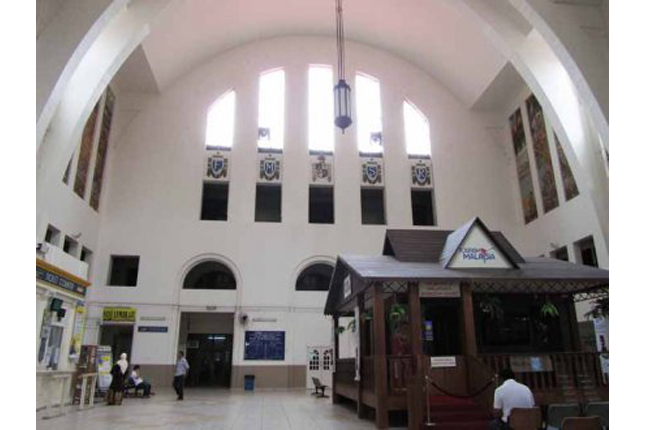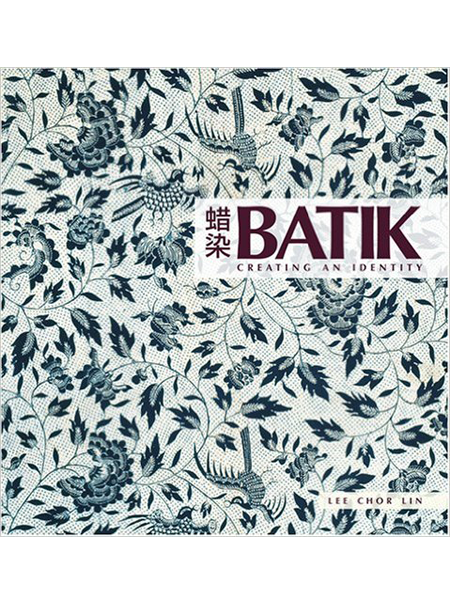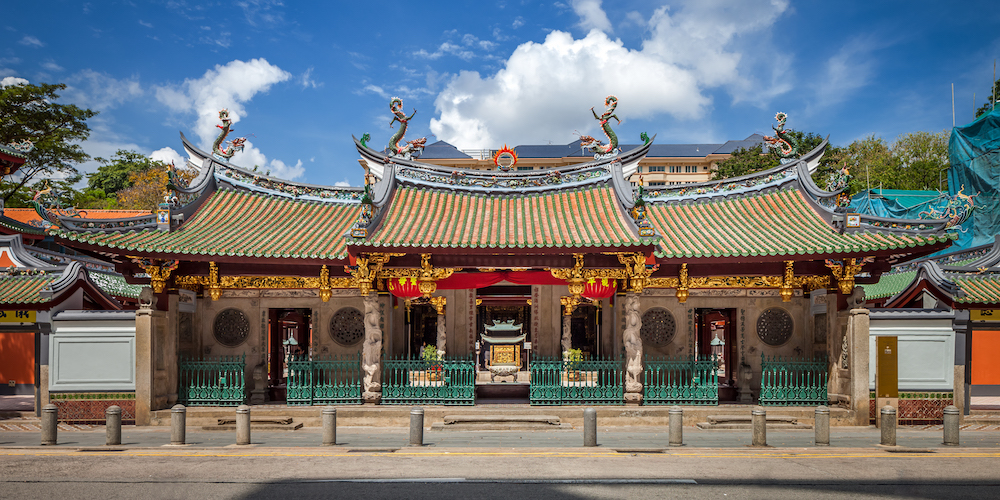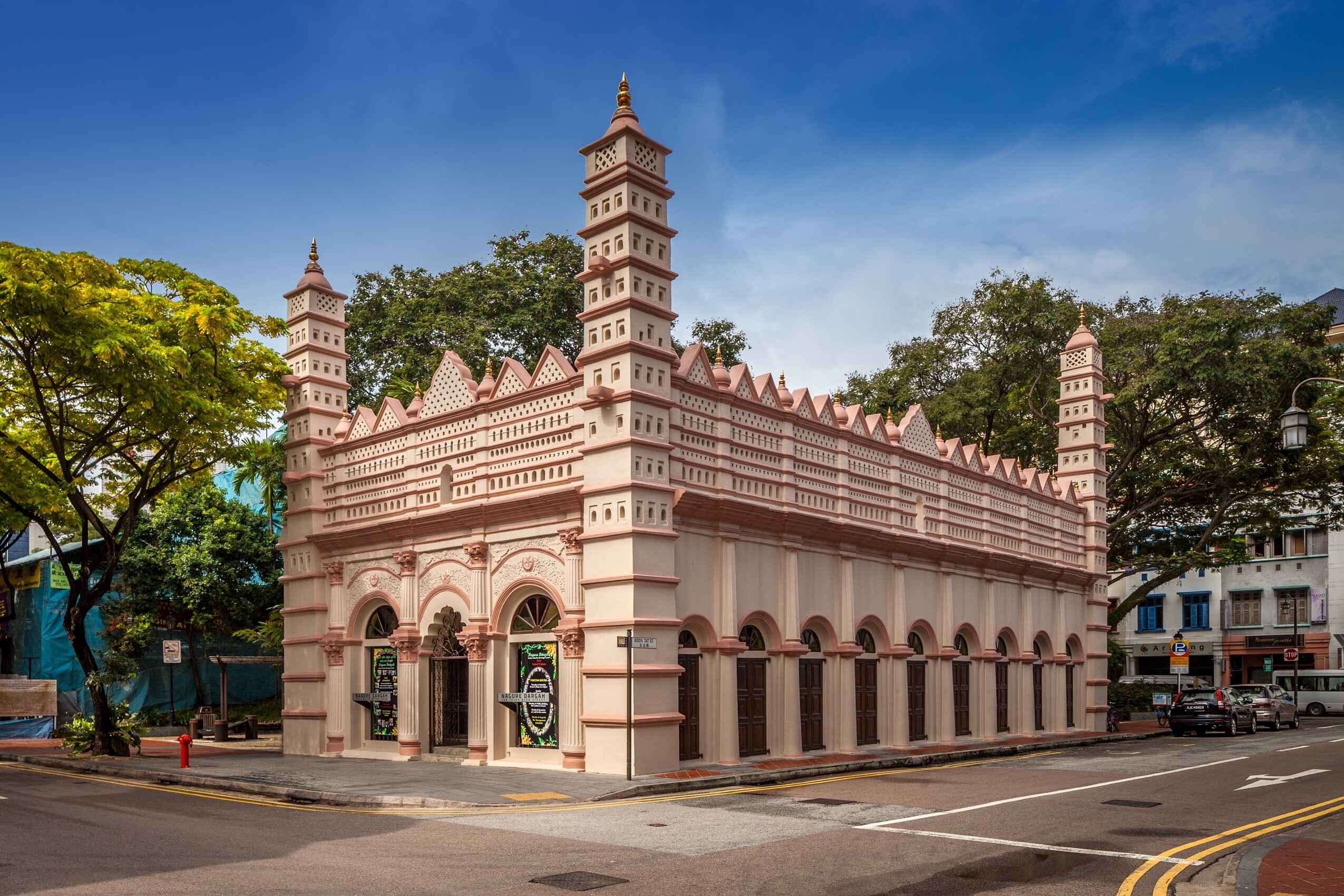This hexagonal tile is decorated in underglaze blue with a central floral motif with radiating leafy tendrils. The tile illustrates the influence of Chinese motifs and techniques in the Islamic arts of the period. Inspired by the blue and white ceramics of the Ming period (1368-1644) in China, this tile demonstates a restrained and highly controlled balance between the decorated and empty spaces. The borders which have been left intentionally blank is unusual in Mamluk art where every available space is usually filled with design. The links between China and the Islamic world are old and important, probably dating back from as early as the 8th century. Imported Chinese wares were considered luxury items and were a source of inspiration to the craftsmen and artisans of West Asia.




